

 We celebrate today, the 99th birthday
of Dr. Charles Hard
Townes, inventor of the concept of the laser, for whom our Townes Laser Institute is named after. Dr Townes, one
of the most influential scientists of the past century, was awarded the 1964 Nobel Prize in Physics, together with Aleksandr
Prokhorov and Nikolai Basov. Prokhorov passed away in 2002, aged 86, Basov in 2001 at the age of 80. The General Physics
Institute of the Russian Academy of Sciences is now named after Prokhorov. The
Townes Laser Institute at UCF was created May 6, 2007 at UCF, with
Dr Townes present. He gave the commencement address in Spring 2007 and was also awarded an honorary degree by
President Hitt. Dr Townes last visited UCF for the CREOL@25 celebration in 2012 . Both Dr Townes and his wife Frances (she turned 98 years this past February) are in good health. As he proclaims to everyone, he has
never worked, he just enjoys science, and still goes to his office at the University of California, Berkeley most weekdays.
We celebrate today, the 99th birthday
of Dr. Charles Hard
Townes, inventor of the concept of the laser, for whom our Townes Laser Institute is named after. Dr Townes, one
of the most influential scientists of the past century, was awarded the 1964 Nobel Prize in Physics, together with Aleksandr
Prokhorov and Nikolai Basov. Prokhorov passed away in 2002, aged 86, Basov in 2001 at the age of 80. The General Physics
Institute of the Russian Academy of Sciences is now named after Prokhorov. The
Townes Laser Institute at UCF was created May 6, 2007 at UCF, with
Dr Townes present. He gave the commencement address in Spring 2007 and was also awarded an honorary degree by
President Hitt. Dr Townes last visited UCF for the CREOL@25 celebration in 2012 . Both Dr Townes and his wife Frances (she turned 98 years this past February) are in good health. As he proclaims to everyone, he has
never worked, he just enjoys science, and still goes to his office at the University of California, Berkeley most weekdays.
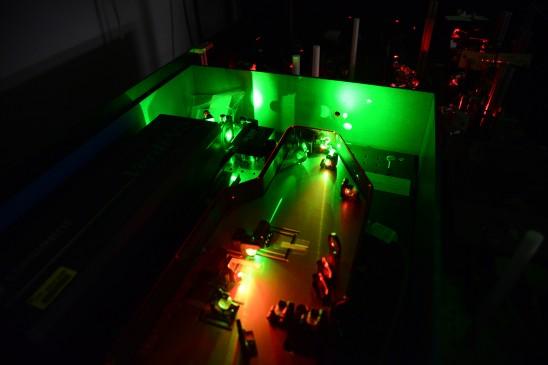
From Central Florida Future:
UCF recently received five research grants — totaling nearly $2 million — making it one of the top three university-award recipients in the nation.
This money will allow UCF and other institutions to buy state-of-the-art research equipment in order to further developments in science education, medical training and the preparation of military troops.
These grants will help UCF specifically to “purchase equipment for projects in the Center for Research and Education in Optics and Lasers|College of Optics and Photonics (CREOL|COP) and the Institute for Simulation and Training in partnership with the College of Nursing,” according to Space Coast Daily’s website.
“Our strategy of focusing on research that stimulates the local and state economies has served us very well in competing for these federal awards,” said MJ Soileau, vice president for research and commercialization at UCF, in an article from the Space Coast Daily website. “Our faculty have consistently shown that they can compete with the best and the equipment purchased with these awards will position them even better for future funding. This is particularly important since most contracts and grants are for specific work to be done and have little or no money for purchase of major capital equipment.”
From CREOL|COP, professor Martin Richardson will receive $702,000 from the Army Research Office for laser research. Professor Kathleen Richardson will receive $627,000 from the Air Force Office of Scientific Research to buy an advanced X-ray diffraction system and further education critical to the Department of Defense.
Professor Sasan Fathpour will receive $324,000 from the Office of Naval Research for the purchase of equipment to create thin films. Professor Leonid Glebov will receive $149,000 from the Army Research Office for equipment regarding holograms.
Professor Greg Welch from the College of Nursing, IST and the College of Engineering and Computer Science received $178,000 from the Office of Naval Research in order to purchase humanoid robots with rubber “skin” faces. These “surrogate humans" will be used for military training.
In total, 149 university researchers at 84 institutions received $39.9 million.
UCF, the University of Illinois and Rutgers were the only colleges to be given five awards.
Other Florida school recipients include the University of Miami and Florida Atlantic University.
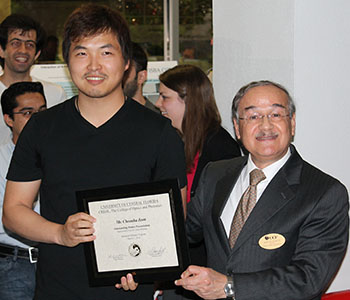
Congratulations to CheonHa Jeon for winning the Affiliates Day 2014 Best Poster Award for his poster "Filament Interaction with Droplets"
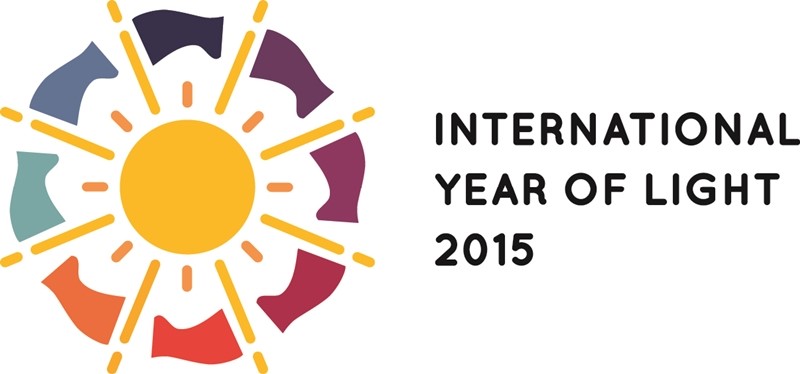
The 68th general Assembly of the United Nations Organization adopted a resolution calling for 2015 to be recognized as the ?International Year of Light and Light-based Technologies?. The text of the resolution stated, ?Applications of light science and technology are vital for existing and future advances in medicine, energy, information and communications, fiber-optics, astronomy, architecture, archaeology, entertainment and culture?. The efforts in 2015 will bring together stakeholders such as the United Nations Educational, Scientific and Cultural Organization (UNESCO), professional societies, educational and research institutions, non-profit organizations and the private-sector partners. The resolution was formally submitted to the General Assembly by UNESCO on November 6th, 2013. John Dudley, president of the EPS and chairman of the ?IYL 2015? steering committee, has been a long-time proponent of this resolution to address the problem that optical technologies were little-understood and appreciated by the general public. Ana María Cetto from the National Autonomous University of Mexico (UNAM), addressing the UN when the resolution was submitted in November, said: ?The IYL will create a forum for scientists, engineers, artists, poets and all others inspired by light to interact both with each other and with the public so as to learn more about the nature of light, its many applications, and its role in history and culture.?
Historically, 2015 will resonate with many anniversaries in the science and applications of light. These begin with the early work on optics by the Islamic scholar Ibn Al-Haytham in 1015, the proposal that light is a wave by Fresnel in 1815, and the electromagnetic theory of light proposed by Maxwell in 1865. More recently anniversaries include Einstein?s theory of the photoelectric effect in 1905, and the discovery of the cosmic microwave background in 1965 by Penzias and Wilson. 2015 will be the 55th anniversary of the first demonstration of the laser by Theodore Maiman, and will also commemorate the 100th anniversary of the birth of Charles Hard Townes, the inventor the concept of the laser.
Martin Richardson, Director of the Townes Laser Institute, February 14th, 2014
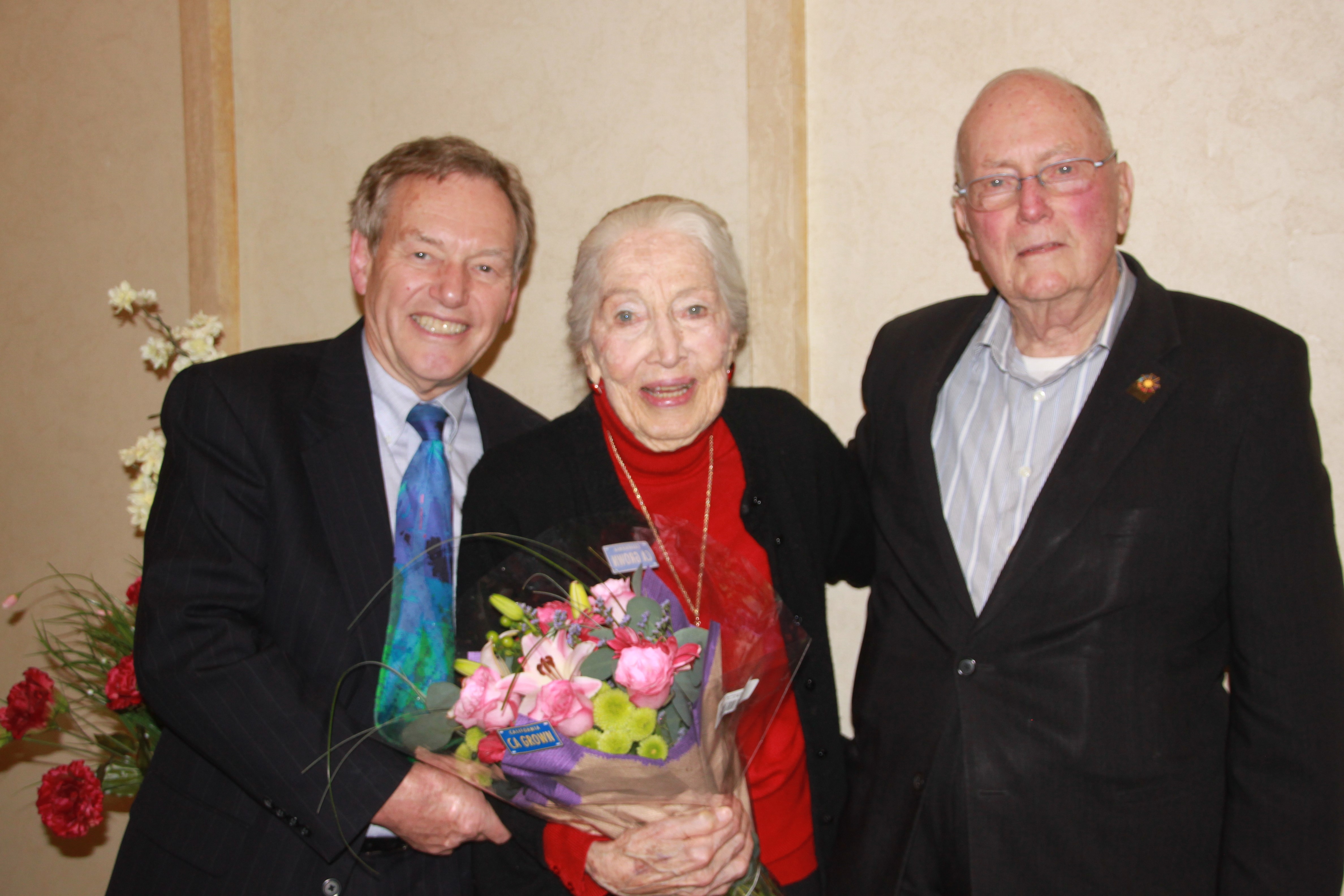
Congratulations today to Frances Townes, wife of 72 years to Dr Charles Hard Townes, 1964 Physics Nobel Laureate and inventor of the concept of the laser, who is celebrating her 98th birthday. Dr Martin Richardson, director of the Townes Laser Institute at UCF, and his wife, Kathleen visited with Dr and Mrs Townes last week in Oakland California. In the photo, Dr Townes is wearing the lapel pin of the International Year of Light, declared by a resolution of the United Nations for 2015. Dr Richardson established a Fellowship in the name of Frances Townes specially for female students in Optics who have demonstrated personal strength and dedication in rising above difficult and underprivileged upbringings in their education. An early advocate for women's rights, Frances Townes was an activist and organizer for the disenfranchised and "damaged homeless youth" in our society. She published her first book, entitled, ?Misadventures of A Scientist's Wife?, in 2007.
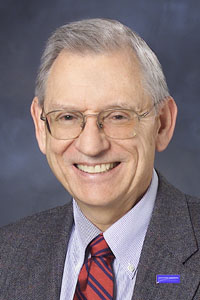
UCF knows Ray Haynes principally for his strong projection of interest in higher education in lasers and photonics as the Director of the University Strategic Technical Alliances offices for TRW/Northrop Grumman at Space Park, Redondo Beach, California, and for the pivotal role he played in negotiating the $24M donation of EUV technology and equipment Northrop Grumman made to UCF in 2003. At the time, this was the largest donation ever received by UCF. Through his initiative the Northrop Grumman Professor of X-Ray Photonics was created at UCF funded by Northrop Grumman. Ray had a lifelong dedication to education, both in academia as a professor at Cal Poly and many positions he held for STEM education in high schools in California and Arizona. He also had affiliations with ABET, ASEE and AIAA. Martin Richardson, director of the Townes Laser Institute at UCF maintained contact with him over the last decade since this donation. "Ray Haynes had a passion for higher education particularly at the high school and college levels. He was deeply proud of his heritage, his mother was Cherokee and his father a Christian Science advocate. He would often describe enthusiastically his trips to various high schools to promote STEM education amongst the less fortunate in society." (see San Luis Obispo Tribune on October 12, 2013 for more details)
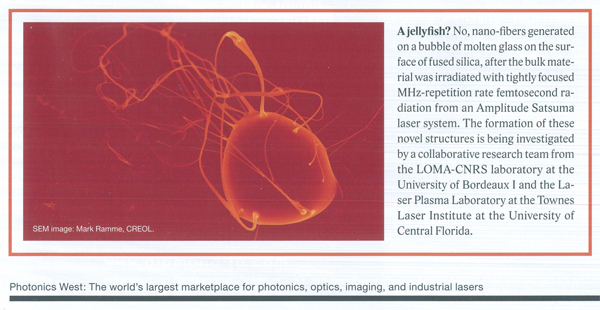
The research, done by the LOMA-CNRS (Bordeaux, France) and the LPL labs, on nano-fibers generated on glass and irradiated with a MHz-repetition rate femtosecond laser was featured on the SPIE Photonics West's newspaper.

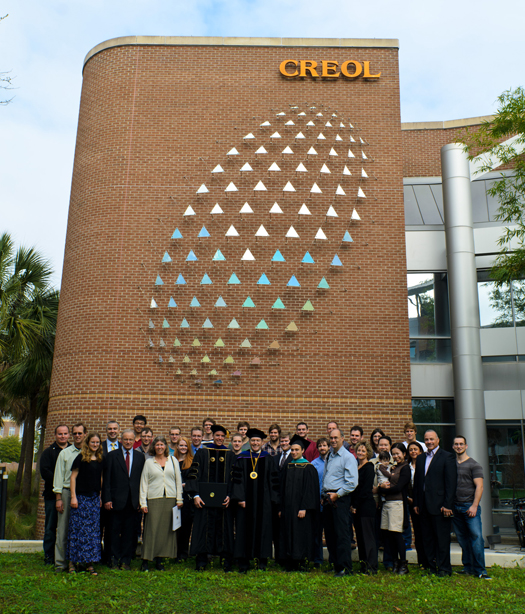
The entire LPL wishes you a Happy Holidays and a Happy New Year.
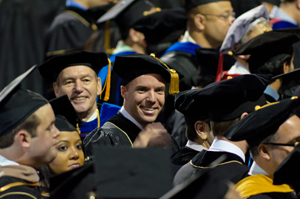

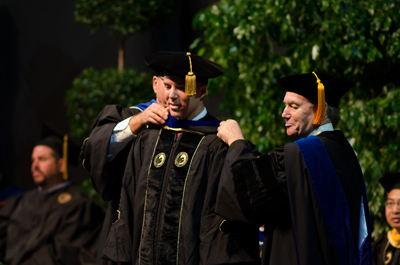
On Friday, December 14, 2012, LPL recent PhD. graduate, Dr. Matthew Weidman, and Masters graduate Nathan Bodnar, walked at the Fall 2012 commencement ceremony. Congratualtions for your great achievements!

Dissertation Title:
Engineering and Application of Ultrafast Laser Pulses and Filamentation in Air
Abstract:
Continuing advances in laser and photonic technology has seen the development of lasers with increasing power and increasingly short pulsewidths, which have become available over an increasing range of wavelengths. As the availability of laser sources grow, so do their applications. To make better use of this improving technology, understanding and controlling laser propagation in free space is critical, as is understanding the interaction between laser light and matter.
The need to better control the light obtained from increasingly advanced laser sources leads to the emergence of beam engineering, the systematic understanding and control of light through refractive media and free space. Beam engineering enables control over the beam shape, energy and spectral composition during propagation, which can be achieved through a variety of means. In this dissertation, several methods of beam engineering are investigated. These methods enable improved control over the shape and propagation of laser light. Laser-matter interaction is also investigated, as it provides both a means to control the propagation of pulsed laser light through the atmosphere, and provides a means to generation remote sources of radiation.

Friday, November 30, 2012 11:00 AM to 1:00 PM
CREOL Room 102
Dissertation Title:
Development of Thulium Fiber Lasers for High Average Power and High Peak Power Operation
Abstract:
High power thulium fiber lasers are useful for a number of applications in both continuous-wave and pulsed operating regimes. The use of thulium as a dopant has recently gained interest due to its large bandwidth, possibility of high efficiency, possibility of high power and long wavelength ~1.8 2.1 µm. The longer emission wavelength of Tm-doped fiber lasers compared to Yb- and/or Er-doped fiber lasers creates the possibility for higher peak power operation due to the larger nonlinear thresholds and reduced nonlinear phase accumulation.
One primary interest in Tm-doped fiber lasers has been to scale to high average powers; however, the thermal and mechanical constraints of the fiber limit the average power out of a single-fiber aperture. One method to overcome the constraints of a single laser aperture is to spectrally combine the output from multiple lasers operating with different wavelengths into a single beam. In this thesis, results will be presented on the development of three polarized 100 W level laser systems that were wavelength stabilized for SBC. In addition to the development of the laser channels, the beams were combined using bandpass filters to achieve a single near diffraction-limited output.
Concurrently, with the development of high average power systems there is an increasing interest in femotosecond pulse generation and amplification using Tm- doped fiber lasers. High peak power sources operating near 2 µm have the potential to be efficient pump sources to generate mid-infrared light through supercontinuum generation or optical parametric oscillators. This thesis focuses on the development of a laser system utilizing chirped pulse amplification (CPA) to achieve record level energies and peak powers for ultrashort pulses in Tm-doped fiber.
A mode-locked oscillator was built to generate femtosecond pulses operating with pJ energy. Pulses generated in the mode-locked oscillator were limited to low energies and contained spectral modulation due to the mode-locking mechanism, therefore, a Raman-soliton self-frequency shift (Raman-SSFS) amplifier was built to amplify pulses, decrease the pulse duration, and spectrally clean pulses. These pulses were amplified using chirped pulse amplification (CPA) in which, limiting factors for amplification were examined and a high peak power system was built. The primary limiting factors of CPA in fibers include the nonlinear phase accumulation, primarily through self-phase modulation (SPM), and gain narrowing. Gain narrowing was examined by temporally stretching pulses in a highly nonlinear fiber that both stretched the pulse duration and broadened the spectrum. A high peak power CPA system amplified pulses to 1 µJ energy with 300 fs compressed pulses, corresponding to a peak power >3 MW. High peak power pulses were coupled into highly nonlinear fibers to generate supercontinuum.
Major: Optics
Educational Career:
BS: 2007, Samford University
MS: 2009, University of Central Florida
Committee in Charge:
Dr. Martin Richardson (Chair)
Dr. Peter Delfyett
Dr. Axel Schulzgen
Dr. Louis Chow
The public is welcome to attend.

Tuesday, November 13, 2012
1:00 PM to 3:00 PM
CREOL Room 102
Dissertation Title:
Phase-locking stability of a quasi-single-cycle pulse
Abstract:
There is increasing interest in the generation of very short laser pulses, even down to attosecond (10-18 s) durations. Laser systems with femtosecond pulse durations are needed for these applications. For many of these applications, positioning of the maximum electric field within the pulse envelope can affect the outcome. The peak of the electric field relative to the peak of the pulse is called the Carrier Envelope Phase (CEP). Controlling the position of the electric field becomes more important when pulse duration approaches single-cycle.
This thesis focuses on the stabilization of a quasi-single-cycle laser facility. Improvements to this already-established laser facility, HERACLES (High Energy, Repetition rate Adjustable, Carrier-Locked-to-Envelope System) described in this thesis include a stabilized pump line and the improvement in CEP stabilization electronics.
HERACLES is built upon an Optical Parametric Chirped Pulse Amplification (OPCPA) architecture. This architecture uses Optical Parametric Amplification (OPA) as the gain material to increase the output energy of the system. OPA relies on a nonlinear process to generate high gain (106) with ultra-wide bandwidth. Instabilities in the OPA driving pump energy can create dynamically fluctuations in the final OPCPA output energy. To reduce these fluctuations two key upgrades were implemented on the pump beam. Both were major improvements in the stability. Firstly, an improved regenerative amplifier design reduced beam pointing fluctuations. Secondly, the addition of a pump monitoring system with feedback-control eliminated long-term power drifts. Both enhanced the OPA pulse-to-pulse and long-term stability.
To improve the stability in measuring CEP drifts, modification of the feedback electronics was needed. The modification consisted of integrating noise reduction electronics. This novel noise reducer uses a similar process to a super-heterodyne receiver. The noise reducer resulted in 60 dB reduction of out-of-band noise. This led to increased signal quality with cleaner amplification of weaker signals. The enhanced signal quality led to more reliable long-term locking. The synthetically increased signal-to-noise ratio allows locking of the CEP frequency below the typically requirements. This integration allows relaxed constraints on the laser systems.
The optics and electronics of a high-power, quasi-single cycle laser facility were improved. This thesis included the stabilization of the pump line and the stabilization of the CEP. This work allows for new long-duration experiments.
Major: Optics
Educational Career:
BS: 2010, University of Central Florida
Committee in Charge:
Dr. Martin Richardson (Chair)
Dr. Zhenghu Chang
Dr. Peter Delfyett
The public is welcome to attend.

Friday, November 02, 2012
10:30 AM to 12:30 PM
CREOL Room 102
Dissertation Title:
Laser Filamentation Interaction with Materials for Spectroscopic Applications
Abstract:
Laser filamentation is a non-diffracting propagation regime consisting of an intense core that is surrounded by an energy reservoir. For laser ablation based spectroscopy techniques such as Laser Induced Breakdown Spectroscopy (LIBS), laser filamentation enables the remote delivery of high power density laser radiation at long distances. This work has shown a quasi-constant filament-induced mass ablation along a 35 m propagation distance. The mass ablated was sufficient for the application of laser filamentation as a sampling tool for plasma based spectroscopy techniques. Within the scope of this study, single-shot ablation was compared with multi-shot ablation. The dependence of ablated mass on the number of pulses was observed to have a quasi-linear dependence on the number of pulses, advantageous for applications such as spectroscopy. Sample metrology showed that both physical and optical material properties have significant effects on the filament-induced ablation behavior.
A relatively slow filament-induced plasma expansion was observed, as compared with a focused beam. This suggests that less energy was transferred to the plasma during filament-induced ablation. The effects of the filament core and the energy reservoir on the filament-induced ablation and plasma formation were investigated. Goniometric measurements of the filament-induced plasma, along with radiometric calculations, provided the number of emitted photons from a specific atomic transition and sample material.
This work has advanced the understanding of the effects of single filaments on the ablation of solid materials and the understanding of filament-induced plasma dynamics. It has laid the foundation for further quantitative studies of multiple filamentation. The implications of this work extend beyond spectroscopy and included any application of filamentation that involves the interaction with a solid material.
Major: Optics
Educational Career:
BS: 2006, Oregon Institute of Technology
MS: 2007, University of Central Florida
Committee in Charge:
Dr. Martin Richardson (Chair)
Dr. Demetrios Christodoulides
Dr. Axel Schulzgen
Dr. Michael Sigman
The public is welcome to attend.

UCF TODAY wrote a brief summary of Dr. Richardson involvment in the promotion of Optics and Photonics and their importance during his recent visit to Capitol Hill.
Read the full article
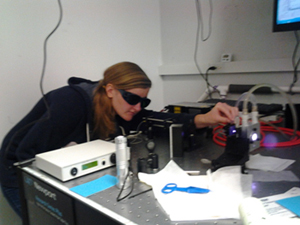
This summer, thanks to the ARO High School Apprenticeships program, the LPL Group, under the Townes Laser Institute, was able to offer an apprenticeship to two High School students, Emily Maddox from Wekiva High School (FL), and Matthew Chun from Jericho High School (NY). The two students were mentored by Christina C.C. Willis, Joshua Bradford, and Yuan Liu.
Matthew's project was related to Laser-induced breakdown spectroscopy (LIBS). The motivation of the project was to assess the possibility of using LIBS to improve the manufacture process of Yttrium Aluminum Garnet (YAG) ceramics, which are important laser material for better solid state lasers. During Matthew's stay in CREOL, he learned to prepare the ceramic precursors, and setup simple LIBS systems. With the LIBS setup he built, he took LIBS spectra of the YAG precursors, calibrated the intensity of the spectra, and analyzed the data he took with his own Matlab codes. From the data he took, he was able to find the plasma temperature based on Boltzmann plots, and evaluate how the temperature influences the spectra. In addition, he built a model based on fundamental LIBS theories and studied how well the real-world data matched with the theoretical model.
Emily has worked on a variety of things. Her primary task has been in the set up and execution of thermal lensing measurements in doped optical ceramics using a Shack-Hartmann Wavefront Sensor (SHWFS). For this task she helped design a water cooled mount for the samples under test, was trained in the alignment and operation of the SHWFS and samples, and has collected data from a variety of ceramic samples. She has also learned programming skills in MATLAB, and has been writing a program to analyze laser output polarization for characterization purposes, as well as working on analogous experiments in the laboratory. As a capstone for her project, she will be giving an oral presentation to other group members at the end of her tenure.
Read the article in the Apopka Chief Newspaper (FL)

A new article "Moisture Measurement Using LIBS" by Yuan Liu, Matthieu Baudelet and Martin Richardson has been published on the G.I.T. Laboratory Journal Europe.
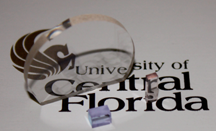
A new article "Transparent Ceramics for Lasers" by Dr. Romain Gaume and Dr. Richardson has been published on the American Ceramic Society Bulletin.
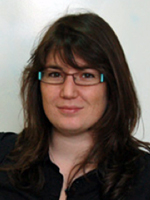
The LPL would like to welcome its new Research Scientist Dr. Magali Durand. Dr. Durand pursued her PhD at the LOA (Laboratory of Applied Optics) at Ecole Polytechnique in Paris on femtosecond laser filamentation. She studied the interaction between two filaments, the filament as a source of secondary radiation (Térahertz, Continuum de lumière, Troisième harmonique, Radio fréquence), and filamentation at long distances (1 km).

The award is the most prestigious a faculty member can receive at UCF. The honor recognizes extraordinary contributions to the UCF community through teaching, research and service. This year, five University of Central Florida scientists and an internationally renowned musician were recognized as Pegasus Professors today, during the annual Founders' Day ceremony in the Student Union.
Dr. Martin Richardson, director of the Townes Laser Institute and a professor of optics, began working at the university in 1990 when he co-established UCF's Laser Plasma Laboratory at CREOL, the Center of Research in Electro-Optics & Lasers.
In 2003, he was appointed the Northrop Grumman Professor of X-ray Photonics, and in 2007 was named the founding director of the laser institute.
Richardson has published more than 400 articles in professional journals, holds 20 patents with several pending, and has chaired many international conferences in addition to being a former associate editor of JQE (Journal of Quantum Electronics), a recipient of the Schardin Medal, and a Fellow of the Optical Society of America.
"Dr. Richardson is a world-class leader in the area of lasers with a strong commitment to research, education, and partnership," said Bahaa Saleh, dean of the College of Optics and Photonics. "He has received an impressive amount of funding from government and industry sources for research on a wide variety of laser applications, and has mentored a large number of students who now hold high positions in industry. His extensive connections and partnerships with many international institutions bring to UCF great visibility and recognition." (from UCF Today)
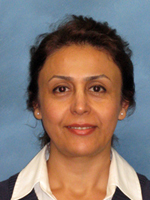
The LPL group would like to welcome Dr Homaira Parchamy, to the Extreme Ultraviolet (EUV) team. Dr Parchamy received her PhD on highly intense laser pulse interaction with magnetized plasma at Energy Environment Sciences, Utsunomiya University in Japan in 2005. She spent 4 years in Japan as a Post-doctoral in the National Institute for Fusion Science (Gifu) and subsequently a researcher in the Tokyo Institute of Technology (Tokyo). Dr Pacharmy is located in Rm 135 and can be contacted at hparchamy@yahoo.com

On Thursday 15th and Friday 16th, UCF's Center for Research and Education in Optics celebrated its 25th anniversary.
For this occasion Nobel Laureates Charles Townes, Nicolaas Bloembergen, and John Hall were present, along with more than 200 alumni and optics professionals.
Read the full article "CREOL celebrates its 25th anniversary" by Jessica Gilbreath in the Central Florida Future
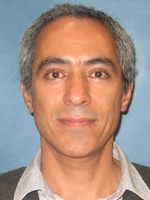 The LPL group would like to welcome the newest member of our staff, Dr Majid Masnavi, a research scientist. Dr Masnavi received his PhD at the Department of Energy Sciences, Tokyo Institute of Technology (Tokyo, Japan) in 2003. He remained at the institute as a research associate, where he worked on investigating discharge and laser produced plasmas for extreme ultraviolet lithography sources and X-ray lasers. His current research interests are high energy density plasma science, laser/discharge/ion-beam produced plasmas, atomic physics of highly-charged ions, particle/plasmas simulation and lithography-related topics. Dr Masnavi is located in CREOL Room 171 and can be contacted at majidmasnavi@creol.ucf.edu
The LPL group would like to welcome the newest member of our staff, Dr Majid Masnavi, a research scientist. Dr Masnavi received his PhD at the Department of Energy Sciences, Tokyo Institute of Technology (Tokyo, Japan) in 2003. He remained at the institute as a research associate, where he worked on investigating discharge and laser produced plasmas for extreme ultraviolet lithography sources and X-ray lasers. His current research interests are high energy density plasma science, laser/discharge/ion-beam produced plasmas, atomic physics of highly-charged ions, particle/plasmas simulation and lithography-related topics. Dr Masnavi is located in CREOL Room 171 and can be contacted at majidmasnavi@creol.ucf.edu
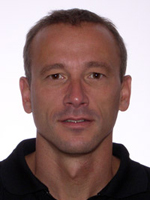 Dr. Bruno Bousquet is a visiting professor from the University of Bordeaux, France. He received a Fullbright fellowship for the 2011-2012 academic year to work in the LPL group on the THz radiations emitted by a laser-induced filament. Dr. Bousquet is also the European Leader of the transatlantic MILMI program, one of the student exchange programs in optics and lasers organized between UCF and European universities.
Dr. Bruno Bousquet is a visiting professor from the University of Bordeaux, France. He received a Fullbright fellowship for the 2011-2012 academic year to work in the LPL group on the THz radiations emitted by a laser-induced filament. Dr. Bousquet is also the European Leader of the transatlantic MILMI program, one of the student exchange programs in optics and lasers organized between UCF and European universities.
Dr Bousquet's office is Room 171, his office phone numberis 407-823-6808 and his professional email address is bruno.bousquet@u-bordeaux1.fr
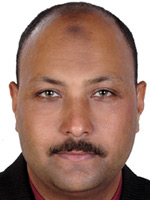
Dr. Harby Ahmed from Cairo University, Egypt is visiting the LPL group in the Townes Institute . He is working with the LPL Laser Sensing and Spectroscopy Team on the analyze of historical objects, textiles, metal threads, and natural dyes in ancient Egyptian artifacts including the using Laser-Induced Breakdown Spectroscopy (LIBS). Using LIBS, he is also looking for a way to clean historical artifacts without damaging them in the process.
Dr Ahmed's office is Room 163, his office phone number is 407-823-6843 and his professional email address is harbyezzeldeen@yahoo.com
Tuesday, June 21, 2011 1:00 PM to 2:00 PM
The Future of Lasers: Two Perspectives brings together two expert viewpoints on the future of quantum cascade lasers, fiber lasers and next-generation solid-state lasers.
Our Expert Panel:
Prof. Federico Capasso
Robert L. Wallace Professor of Applied Physics
and Vinton Hayes Senior Research Fellow in Electrical Engineering
Harvard School of Engineering and Applied Sciences
Capasso joined Harvard in 2003 after a 26-year career at Bell Labs. His research includes the design of new artificial materials and novel devices, plasmonics, nanophotonics, and the investigation of Casimir forces. He is co-inventor of the quantum cascade laser (QCL), a fundamentally new light source that has now been commercialized. He will discuss QCLs from their invention to exciting advances in the physics, applications and commercialization of these revolutionary lasers that cover the mid- and far-ir spectrum and are impacting sensing, spectroscopy and sub-wavelength photonics.
Prof. Martin C. Richardson
University of Central Florida Trustee Chair
Northrop Grumman Professor of X-ray Photonics and
Director, Townes Laser Institute
In 1990, Richardson and William Silfvast established the Laser Plasma Laboratory at CREOL, the Center of Research in Electro-Optics & Lasers at the University of Central Florida, developing research programs in ultrafast laser development, laser-plasma studies, EUV/X-ray lithography and microscopy and laser materials processing. He became the founding director of the Townes Laser Institute in 2007. The Townes Laser Institute and the college maintain major research programs in high-power fiber lasers, photonic crystal fibers and structures, ultrafast lasers and advanced photonic and communications devices. Richardson will discuss fiber lasers and next-generation solid-state lasers, including ceramic lasers and ceramic-fiber lasers.
Space is limited. Register today!
http://www.photonics.com/Webinar.aspx?WebinarID=9
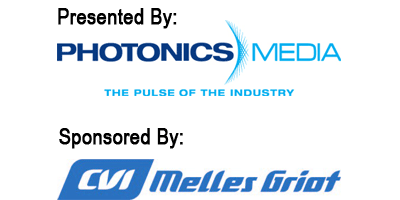
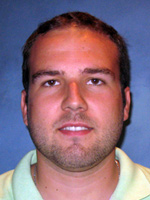
Atlantis-MILMI student, Charles Loussert, will defend his Masters thesis on Thuesday, June 21st, in room A-214 at 8:30am. He will be the first CREOL/Bordeaux student to graduate from the Atlantis-MILMI international dual degree exchange program.
A collaborative research led by Laser Material Processing team of laser plasma laboratory, with Dr. Jannick P. Rollands group (now at U of Rochester), just published a paper showing the first demonstration of 3D imaging of deeply buried laser-induced void structures in glass using Optical Coherence Tomography (OCT). In this paper, LMP team generated femtosecond laserwritten void structures in a fused silica cube as embedded scattering sources and successfully demonstrated high resolution OCT images of the structures without shadowing effects impugning the image fidelity. The paper shows that OCT can provide lateral and depth resolution on a micron scale with high signal/noise contrast therefore can be utilized for a nondestructive diagnostic tool requiring no sample preparation. This may also suggest a feasibility of an in-line monitoring system for femtosecond laser processing.
Jiyeon Choi, Kye-Sung Lee, Jannick P. Rolland, Troy Anderson and Martin C. Richardson, Nondestructive 3-D imaging of femtosecond laser written volumetric structures using optical coherence microscopy Applied Physics A: Volume 104, Issue 1 (2011), Page 289-294
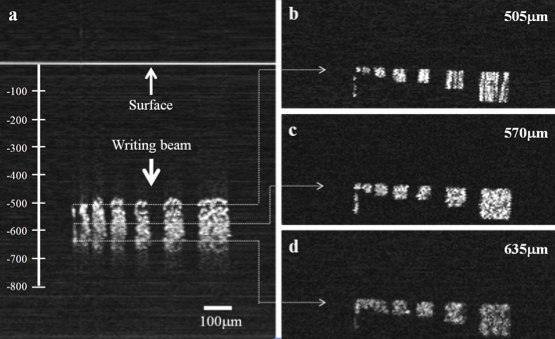
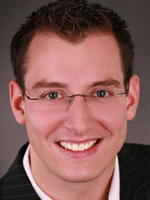
Fabian Weirauch is part of the Franhaufer Townes Collaboration and during his stay was involved in laser processing of polymers. He is presenting some of the latest results Wednesday, May 11th at 2pm in room A214.
"Investigations into welding of transparent and opaque polymers using laser radiation at the wavelength ? = 2 µm"
Abstract:
Novel high power fiber laser systems at the wavelength of 2 µm extend the range of possible material processing. It is known that polymers have an absorption profile depending on the wavelength. As a result of this the process of welding of polymers can be improved and new applications may evolve. During this project the weldability of different kinds of polymers was determined by performing melting and welding tests. The presentation gives an overview of the state of the art in welding of polymers and our latest results.
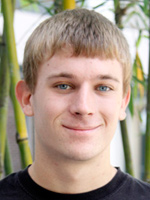
IREU student Christopher Nergard's paper "Refractive Index Profiling Using Transport-of-Intensity Equation and Abel Inversion". placed 2nd in the Technical Paper Competition at IEEE SouthEastCon took place on Saturday 3.19.2011. Each 8 finalist were given 15 minutes to present their paper, followed by 5 minutes of questions from the 3 judges and from the audience. The finalists were decided based on a scoring of their research paper. The submitted papers came from schools in the southeast part of the US and from Jamaica.
CheonHa Jeon, actually working in the Laser and Plasma Laboratory group, just published is first paper in a prestigious journal. Stemming from his work with butterflies, the paper, "Developmental Plasticity in Sexual Roles of Butterfly Species Drives Mutual Sexual Ornamentation," from Hui Cao's group at Yale was just published in Science.
"Developmental Plasticity in Sexual Roles of Butterfly Species Drives Mutual Sexual Ornamentation"
Kathleen L. Prudic, Cheonha Jeon, Hui Cao, and Antónia Monteiro
Science 7 January 2011: 73-75.
International REU Student, Christopher Nergard, Wins a University of Central Florida's Office of Undergraduate Research grant for his proposal entitled "Evanescent Waveguide Coupling."
EVENT OVERVIEW
The analytical use of Laser-Induced Breakdown Spectroscopy (LIBS) has its origins back to 1963 with the study of Mrs. Debras and Guedon. Since then, the technology associated with LIBS has evolved (lasers, spectrometers, detectors, data analysis). However despite considerable advantages that only laser-induced plasmas can provide, the delicacy to control and model their basic fundamentals leads to a slower integration of LIBS in the analytical field than other established plasma based techniques such as GD- or ICP-OES.
A review of the basic principles of LIBS will be given and discussed to better understand the technique, the reasons of its slower integration but nevertheless appreciate and explore the unique possibilities that only LIBS can provide to the analytical community.
Speaker:
Dr. Matthieu Baudelet
Senior Research Scientist
Townes Laser Institute
CREOL, The College of Optics & Photonics
University of Central Florida
David Walsh
Editor in Chief
Spectroscopy
Register
Dr. Zenghu Chang will join the faculty of UCF this Fall in the College Optics & Photonics and the Physics Department at UCF. He is expected to lead the expansion of the Townes Laser Institute into attosecond laser research. Previously at Kansas State University, Chang has pioneered methods of generating isolated attosecond optical pulses, which are used to observe fast phenomena in the quantum world of electrons within atoms and molecules. His research on 'double optical gating' (DOG) is highlighted in the July 2010 issue of Nature Photonics
New publication in JAAS: "Elemental analysis by microwave-assisted laser-induced breakdown spectroscopy: Evaluation on ceramics" by Y. Liu et al.
"There are several metals that are harmful or beneficial to your health. One example is copper, which is toxic if you absorb too much of it. You can prevent vegetables grown in environments with too much copper from reaching the food chain and clean up those places, if you have a sensitive and reliable detection technique,? added Dr. Matthieu Baudelet, a member of Yu?s team who is now at the University of Central Florida in Orlando. ?LIBS is a good technique for this kind of analysis because the hot plasma can excite every element in a vegetable ? even if it?s present at low concentrations." Read The Full Article
From "Spectroscopy detects toxins in veggies" in Photonics Spectra.
Dr. Matthieu Baudelet is a member of Dr. Martin Richardson's LPL group.
Posted Wednesday, April 07, 2010
?Optics in Security and Forensics Research?
Friday, April 16, 2010 1:00pm-2:00pm
CREOL Room 102
Michael Sigman
Department of Chemistry and National Center for Forensic Science
University of Central Florida
Abstract:
Has your favorite optical spectroscopy been highlighted on CSI? While much of what is depicted in television shows popularizing forensic science does not reflect reality, the non-destructive or minimally-destructive nature of many optical techniques make them highly attractive to forensic and security applications. Surreptitious and stand-off applications serve to further enhance the value of optical techniques in many instances. This presentation will highlight several aspects of our research which focus on optical spectroscopy, coupled with chemometric techniques, to address issues of interest to forensic science and national security. Research in laser induced breakdown spectroscopy and visible microspectrophotometry will be discussed relative to their use in the analysis of explosives, glass, paint and fibers. The interdisciplinary nature of forensic and security science has opened many collaborative research opportunities, which will be highlighted in the presentation. The presentation will conclude with some comments on potential opportunity areas for optics in security and forensic research.
Biography:
Michael Sigman studied chemistry at Southwest Missouri State University, receiving a B.S. degree in 1982. His doctoral research in physical organic chemistry was undertaken at Florida State University. In 1986 he moved to the University of Illinois, Urbana-Champaign, as an NIH postdoctoral fellow, and then moved to the University of Chicago in 1987 for two additional years of NIH postdoctoral work in photochemistry and laser spectroscopy. In 1989, he was hired as a research scientist at Dow Chemical Co. in Midland, MI. One year later, Dr. Sigman accepted a research staff position at Oak Ridge National Laboratory in Tennessee. At Oak Ridge, he spent 12 years conducting research in areas ranging from environmental photochemistry explosives analysis. In 2002, Dr. Sigman moved to the University of Central Florida and the National Center for Forensic Science to become an Associate Professor of Chemistry and the Assistant Director for Physical Evidence. In 1997, Dr. Sigman was the recipient of an R&D-100 Award for the development of a new air-sampling adsorbent. He has served on numerous review/advisory panels and in 2002, Dr. Sigman served as the Chemical Threat Group Chair for Department of Energy workshop on Basic Research Needs for Countering Terrorism.
For More Information:
Dr. Martin Richardson
407-823-6819
mcr@creol.ucf.edu
Timothy McComb selected for College of Optics and Photonics winner of the Award for Outstanding Dissertation. The award will be made at the Graduate Awards Breakfast on Friday, April 9, 2010.
Charles Townes, an SPIE Fellow who won a Nobel Prize in 1964 for work leading to the demonstration of maser and laser oscillators, is the 2010 winner of the SPIE Gold Medal, the highest honor the Society bestows.

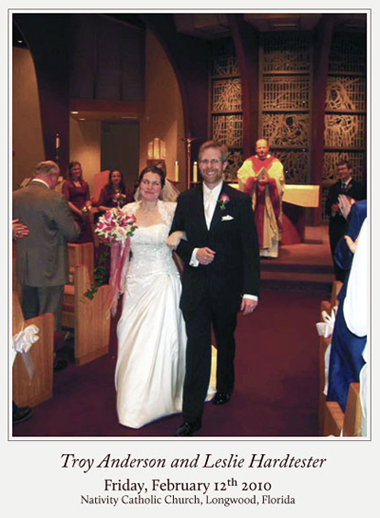
The Fiber Laser Development Group (L. Shah, C. Willis, R.A. Sims, P. Kadwani, C. Jollivet-Salvin) is demonstrating that thulium fiber lasers are ideal for atmospheric testing as they offer high efficiency, low beam divergence, and robust construction. Read the Full Story
CREOL Student of the Year Award 2009/2010 (pdf)
Applications for The Shocase of Undergraduate Research Excellence (SURE) are due Febuary 19th 2010, 5pm. The Event is Thursday, April 1st from 1:30pm to 5pm.
This year we celebrate the 50th birthday of the Laser!
For that occasion the Laser Fest created a website: http://laserfest.org
It's full of info, interviews, and other videos...
LP Photonics, and its founder Dr. Martin Richardson featured in "UCF Venture Lab" newsletter.

Dr. Tim McComb is on the cover page of the UCF Research & Commercialization Annual Report for the 2009 year.
Title: Power Scaling of Large Mode Area Thulium Fiber Lasers in Various Spectral and Temporal Regimes
Abstract: High power thulium fiber lasers are interesting for a myriad of applications due to their potential for high average output power, excellent beam quality, compactness, portability, high operating efficiency and broad, eye-safe spectral range from 1.8-2.1 µm. Currently, the majority of thulium laser research effort is being invested into scaling average output powers; however, such output powers are being scaled with no degree of control on laser system output spectrum or temporal behavior. Thulium fiber laser technology is not useful for many of its most important applications without implementation of techniques enabling tunable, narrow spectral widths with appropriate pulse durations for particular applications. This work outlines several techniques for spectral control of thulium fiber lasers and investigates scaling of average laser powers while using these techniques to maintain a desired spectral output. In addition, an examination of operation in both nanosecond and picosecond pulsed regimes and scaling of average powers and pulse energies in these regimes to useful power levels is conducted. The demonstration of thulium fiber laser systems for applications in frequency conversion and spectral beam combination is also discussed. In addition to the experimental results, theoretical modeling of thulium fiber amplifier operation, simple thermal management analysis, as well as practical fiber and system design considerations for future power scaling are presented. Experimental and theoretical results of this work will enable the successful design of future extremely high power spectrally and temporally controlled thulium fiber laser systems.
Date: Tuesday, October 27, 2009
Time: 11:00 AM
Room: CREOL 102
Title:Femtosecond Laser Processing of Chalcogenide Glasses for Optofluidics
Abstract:
Femtosecond Laser Processing (FLP) is a powerful and flexible processing technique that can be used to fabricate various functional elements in transparent media such as optical waveguides, diffractive optical elements, and hollow micro-channels. Bypassing linear absorption and exploiting nonlinear absorption of the laser light, FLP is capable of sub-surface modification and enables the fabrication of 3D device geometries not easily obtained using other methods. Optofluidics, the integration of optical and fluidic elements on a single chip-based platform, is a rapidly developing field of study that is poised to take advantage of these unique fabrication abilities of FLP. Optofluidic devices are being explored for lab-on-a-chip and sensing applications by utilizing optical analysis techniques such as absorption or refractive index measurements on coupled fluidic channels and are an ideal means for making complex chemical measurements available outside the standard laboratory setting. In this work, the femtosecond laser photo-response of new Chalcogenide glasses is studied and the optimization of photo-induced modifications through laser processing conditions such as laser repetition rate and laser dose are discussed. In addition, FLP is used for the fabrication of optical and microfluidic elements towards the fabrication of integrated optofluidic sensors. Chalcogenide glasses with tailored chemical compositions are of particular interest as new substrate materials for FLP due to their structural flexibility, an ability to "tune" the glass properties through their chemical composition, and high IR transparency, which enables sensing biological and chemical analytes with spectral fingerprints in regions of the spectrum where many optical materials absorb.
Date: Tuesday, November 5, 2009
Time: 10:30 AM
Room: CREOL 102
Title: Femtosecond Laser Direct written olumetric diffractive optical elements and their applications
Abstract: Since the first demonstration of femtosecond laser written waveguides in 1996, femtosecond laser direct writing (FLDW) has been providing a versatile means to fabricate embedded 3D microstructures in transparent materials. The key mechanisms are nonlinear absorption proceseses that occur when a laser beam is tightly focused into a material and the intensity of the focused beam is over the threshold for photo-induced structural modification. One of the most useful features that can be exploited in fabricating photonic structures is refractive index change which results from the localized energy deposition. The laser processing system for FLDW can be realized as a compact, desktop station, implemented by a laser source, a 3D stage and focusing optics. Thus, FLDW can be readily adopted for the fabrication of the photonic devices. For instance, it has been widely employed to various areas of photonic device fabrication such as active and passive waveguides, couplers, gratings, opto-fluidics and similar applications.
This dissertation describes the use of FLDW towards the fabrication of custom designed diffractive optical elements (DOE's. These are important micro-optical elements that are building blocks in integrated optical devices including on-chip sensors and systems. The fabrication and characterization of laser direct written DOEs in different glass materials is investigated. The design and performance of a range of DOE's is described, especially, laser-written embedded Fresnel zone plates and linear gratings. Their diffractive efficiency as functions of the fabrication parameters is discussed and the fabrication process optimized. The potential of the micro-DOEs and their integration shown in this dissertation will impact on the fabricaiton of future on-chip devices involving customized DOEs that will serve great flexibility and multi-functional capability on sensing, imaging and beam shaping.
Date: Tuesday, November 5, 2009
Time: 3:30 PM
Room: CREOL 102
Christopher G. Brown win the student poster award during the 2009 CREOL Industrial Affiliates Day. His poster, entitled "Principal Component Analysis (PCA) of Femtosecond and Nanosecond Laser Induced Breakdown Spectroscopy (LIBS) for Discrimination of Organic Residues " shows the spectroscopic and analytical advantages of the femtosecond pulses for detection and discrimination of organic residues, including explosives, in the field.
Timothy S. McComb is finalist of the "2009 CREOL Student of the Year Finals". His talk, entitled "Spectral and Temporal Control of High Power Large Mode Area Thulium Fiber Lasers" shows his work on the development of a tunable fiber laser system with narrow linewidth and capable of 200W output power for applications such as atmospheric propagation over long distances with eyesafe laser systems.